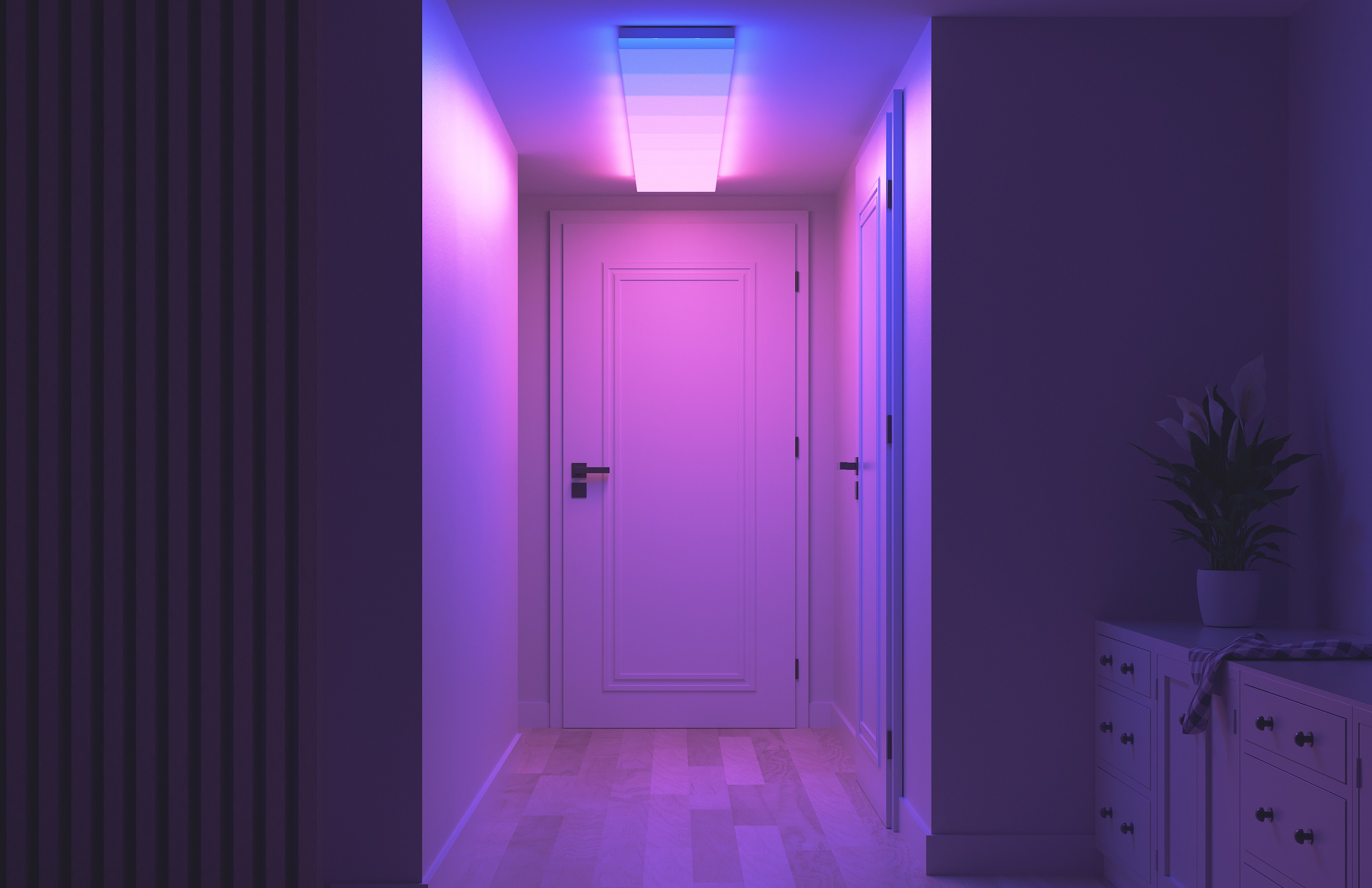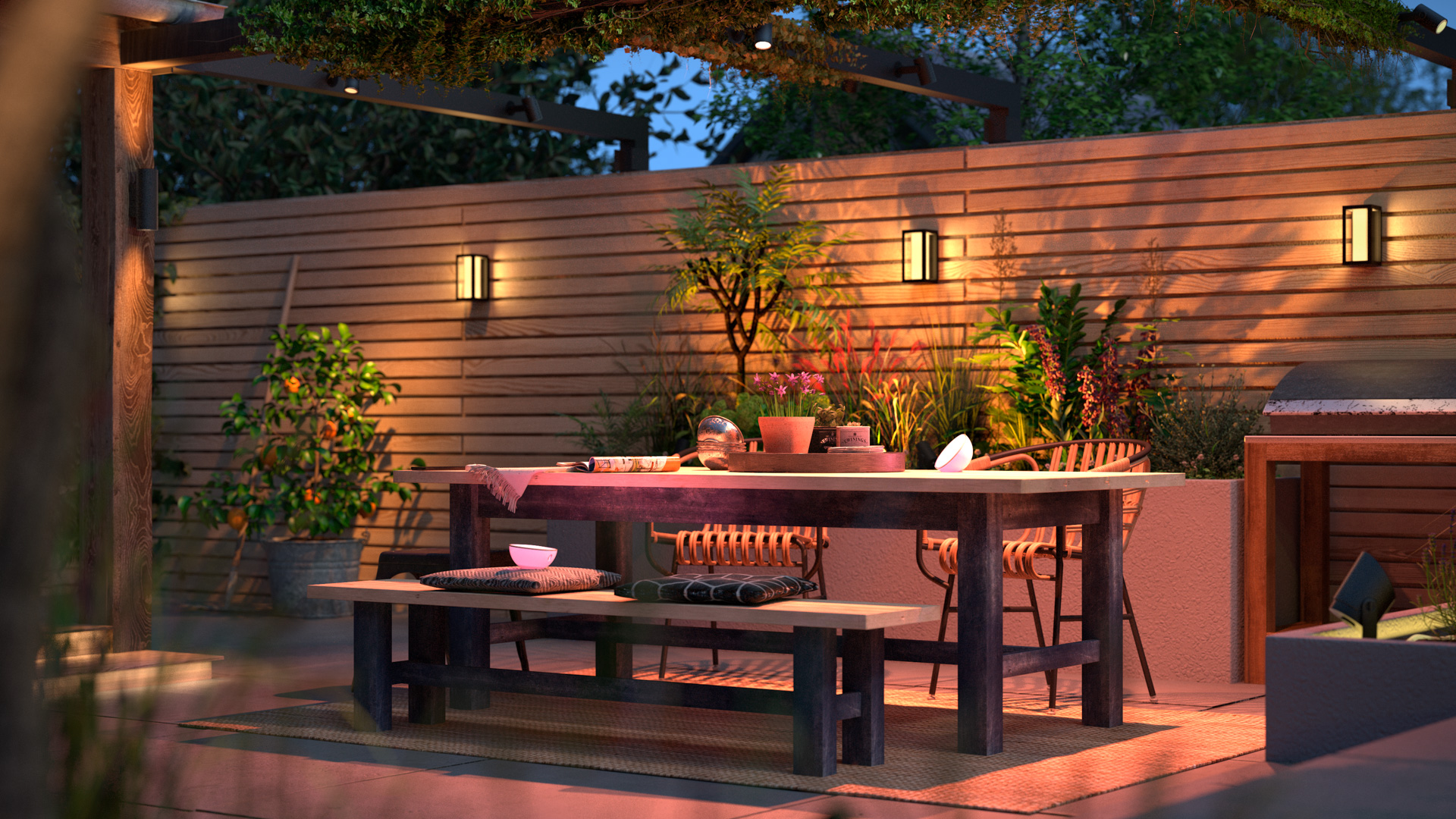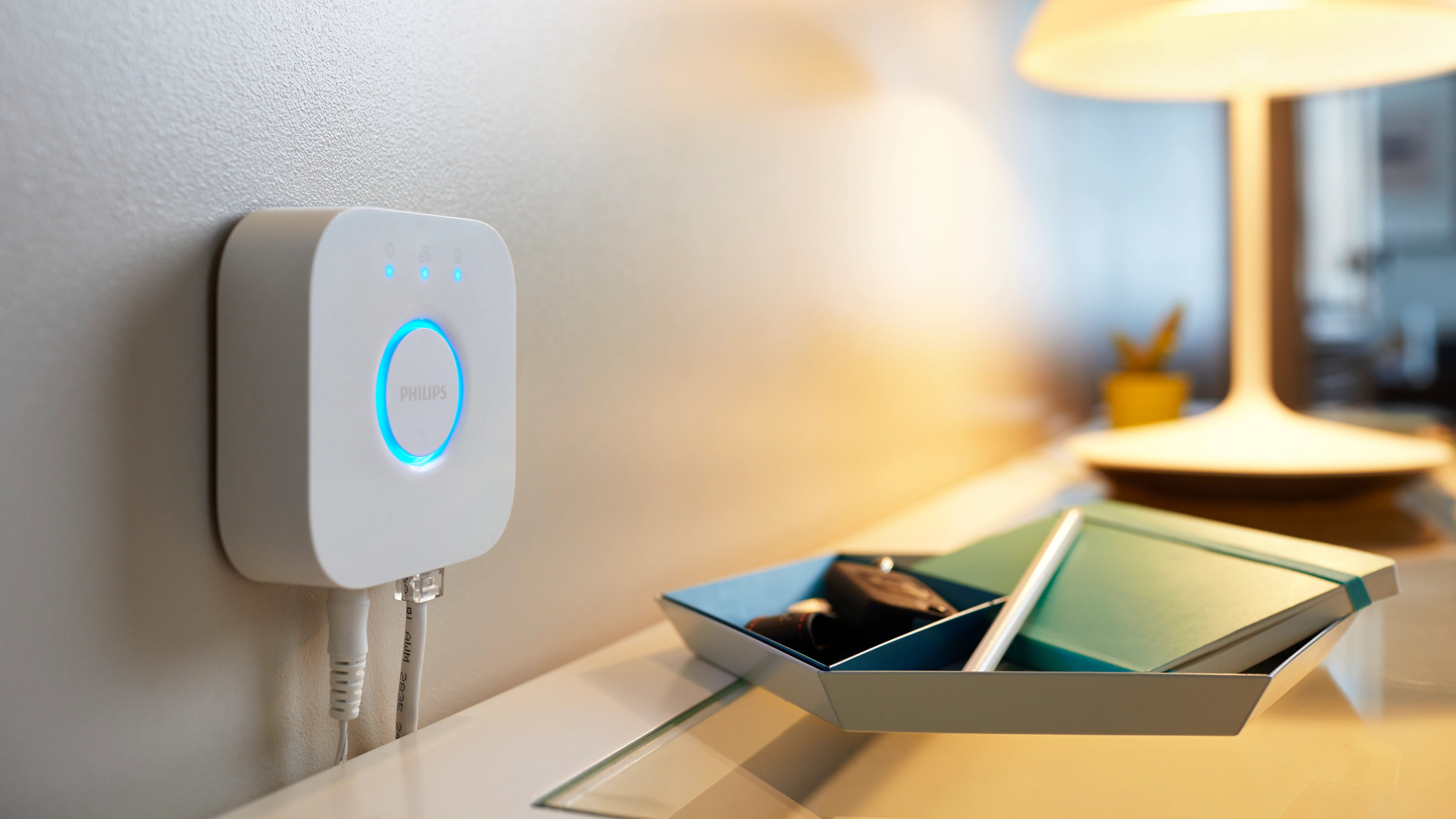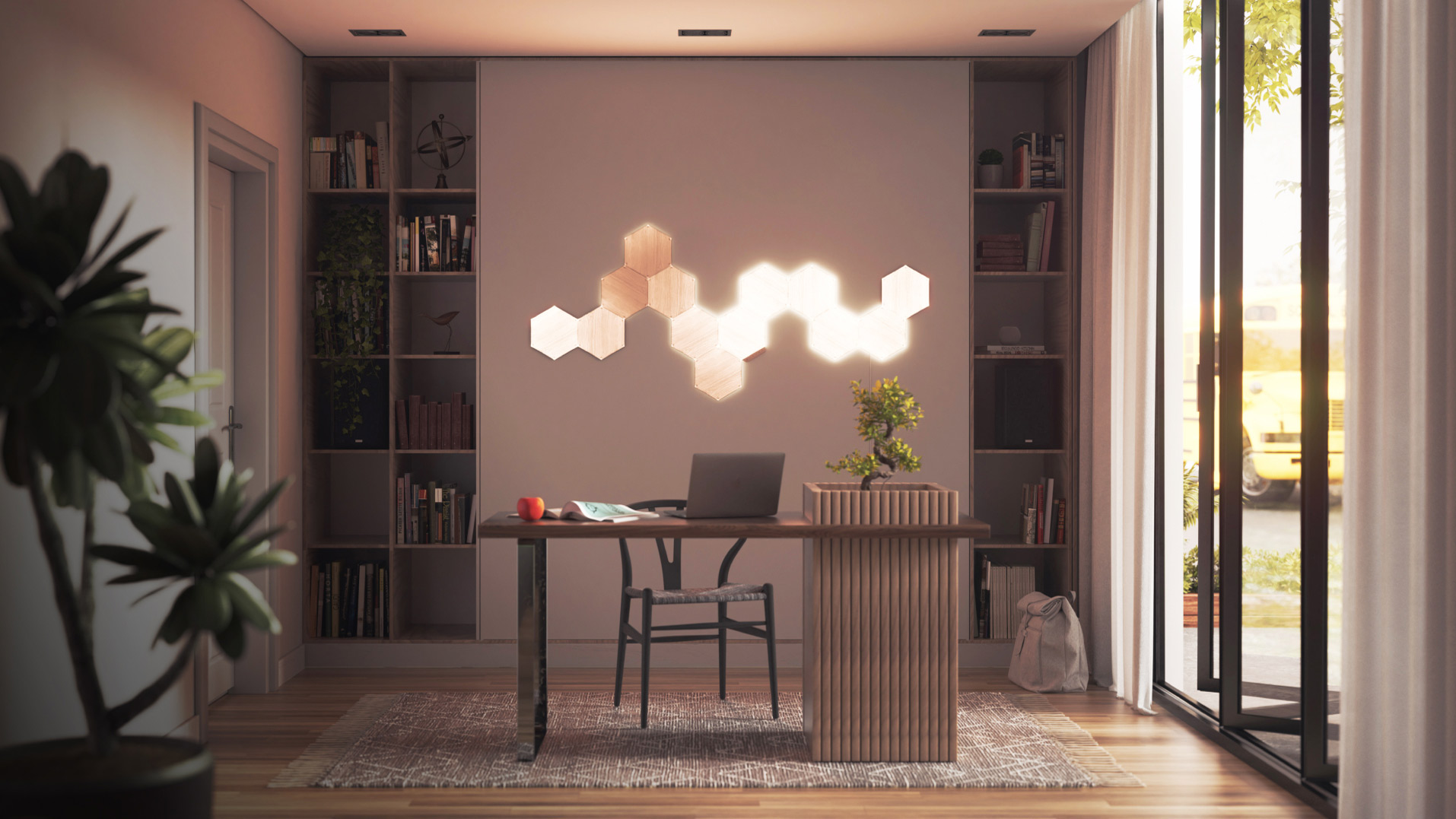A beginner’s guide to smart lighting: everything you need to know
Want to get a jump-start on your smart lighting journey? We've got you covered.

If one gadget is capable of making you feel like you live in the future without too much complexity, smart lighting is it. App- or voice-controlled (or automated, if you prefer), smart lighting can be set to any color, any brightness and any temperature. There are different bulb types to pick from, LED strip lighting, chandeliers, and even a wide selection of weatherproof lights for your garden, too.
The best smart lights are made by a broad range of manufacturers, from market leaders like Philips Hue to lesser-known companies making similar bulbs for a fraction of the price.
Almost all of these devices work with smart home systems like Amazon Alexa, Google Home, Apple Home, and Samsung SmartThings, and some even feature in-built motion sensors and customizable schedules. They're often even compatible with the traditional switches already fitted to your home.
There’s a lot to unpack here, from the bulbs themselves to the apps, automation, routines, voice commands, and compatibility with other smart home devices. This is TechRadar’s complete beginner’s guide to smart lighting.

What is smart lighting?
First off, let's explain what we actually mean by smart lighting. Although they usually look like traditional light bulbs, smart lights can change their brightness, color, and temperature – the latter being the difference between a cool, blueish white and a warm, orange hue. Smart lighting connects to your smartphone with Bluetooth or via a hub attached to your Wi-Fi router.
Their color, brightness, and temperature can be controlled by a phone app, but also via smart home systems like Amazon Alexa, Google Home, and Apple Home. Voice control is also possible, by saying things like: “Alexa, make the kitchen brighter” or: “Hey Google, turn the living room lights orange.”
Smartness also means these lights can be programmed with a schedule, like one that sees bulbs brighten and shift from warm to cool light in the morning, simulating sunrise. They can also be set to operate in a way that mimics you being home, in a bid to deter burglars while you’re away, and they can be controlled by motion sensors too.
Sign up for breaking news, reviews, opinion, top tech deals, and more.
With smart home platforms like IFTTT (If This, Then That) you can also set up automation, like triggering your desk lamp to flash when your Uber has arrived, for example, or when someone rings your smart doorbell.
Which smart lighting system is best?
There is no definitive answer here, and it instead depends on your budget and what you want from a smart light system. If you have plenty of cash and want lots of choice, Philips Hue is the one to go for.
A lower-cost option that still offers lots of choices is Govee, while smart bulbs from the likes of TP-Link’s sub-brand, Taco, as well as those from Ikea, and Nanoleaf all work in a very similar way.
You don’t have to pick one system and stick with it. Because they all work with Alexa and Google Home, you can group together some Hue smart lights with bulbs from a lesser-known brand like Lepro (which we found on Amazon when looking for cheap bathroom bulbs). Add them all to the same group, like a collection of bulbs in your lounge, and they will all work together when you control them with Alexa or Google Assistant.

Smart lighting: a beginner's guide
How does smart lighting work?
Smart light bulbs are powered from the sockets in your ceiling or lamps, just like normal lighting. Other smart lights, like LED strips, need to be plugged into a wall outlet, while some battery-powered wireless options are also available.
Some smart light bulbs connect directly to a smartphone app using Bluetooth. Others connect wirelessly to their own hub, which plugs into an Ethernet port of your Wi-Fi router. Those with such a connection can be controlled from anywhere in the world, provided your phone has a signal, while those using Bluetooth can only be controlled within Bluetooth range, which generally means from within the home.
Philips Hue, Nanoleaf and Govee also sell light strips that fit the back of your television or computer monitor, which can be plugged into a camera or HDMI Sync Box which directs the lights to replicate whatever appears on-screen. Other systems respond to music too, adding a new dimension to your next house party.
Can smart lights be fitted to any home?
Generally speaking, yes. Companies like Philips Hue and TP-Link sell smart light bulbs that are compatible with industry-standard light sockets. Screw and bayonet-type smart bulbs are available, along with spotlights and even Edison-style filament bulbs with adjustable brightness and temperature.
Smart LED light strips plug into a wall outlet for power then simply stick into place with an adhesive strip. These can be stuck to the back of your television, or under kitchen cupboards to create the look of expensive integrated floor lighting for a fraction of the price.
Smart garden lighting is powered from the mains just like regular outdoor illumination, but will need to be within reach of either your phone or the system's wireless control hub to work properly.

What’s the difference between white and color smart lights?
Some manufacturers offer two versions of their most popular bulbs, generally called ‘white’ and ‘color’ and with the latter being more expensive. Both can have their brightness and temperature adjusted, but only the latter can shine any color (blue, red, green, yellow etc.).
Unless you really want to turn your kitchen blue or your lounge green, white bulbs with temperature control are often all you need in most rooms of the home.
I have full-color bulbs in my lounge, bedroom, hallway and bathroom, and while it is sometimes fun to pick a funky color with a lamp or two, I almost always stick to different temperatures of white. It’s nice to have extra options, but a cool, crisp white to help me feel energized during the day, followed by a shift to a warmer, softer white to relax in the evening is all I really need.
How do voice assistants work with smart lighting?
Alexa, Siri, and Google Assistant can all be used to control smart lighting with voice commands. This can be particularly useful when you want to quickly change a bulb's brightness or color, or to turn the light off when you’re in bed and the physical switch is out of reach. It’s also much quicker than grabbing your phone and opening an app.
That said, it isn’t always easy to remember exactly the right voice commands, especially if you want to change the lights to a pre-set whose name you can’t remember, or you want to change several groups of lights at once. We recommend grouping devices into rooms and nicknaming individual lights based on placement or other distinguishing features.
What are routines and automation?
Tech companies all have their own way of describing smart home automation systems, but they essentially all do the same thing. These are pre-programmed instructions telling smart home systems what to do, and when.
At their simplest, routines tell a smart light to switch on at a certain time of day, then switch off again at another time. More complex automation routines can tell lights to switch on under certain conditions, such as when you arrive home at night, or when a burglar alarm has been tripped. Other routines can include other smart home devices; you could program Alexa to read out the weather forecast at 7am, gradually turn on the bedroom lights, adjust the thermostat and turn on a smart plug attached to a coffee machine, all as part of one routine.

Are there health benefits for smart lights?
Because they offer different temperatures and colors as well as brightness, smart lights can be programed to simulate sunrise and sunset, meaning it can help you regulate your circadian rhythm. It’s a skill shared by most systems, and sees lights start at their warmest and least bright setting, before getting gradually brighter and cooler.
These artificial sunrises can be configured to last just a couple of minutes or half an hour, depending on how leisurely you want your morning wakeup routine to be. Smart lights can be programmed to simulate a sunset too.

Alistair Charlton is based in London and has worked as a freelance technology and automotive journalist for over a decade. A lifelong tech enthusiast, Alistair has written extensively about dash cams and robotic vacuum cleaners for TechRadar, among other products. As well as TechRadar, he also writes for Wired, T3, Forbes, The Independent, Digital Camera World and Grand Designs Magazine, among others.